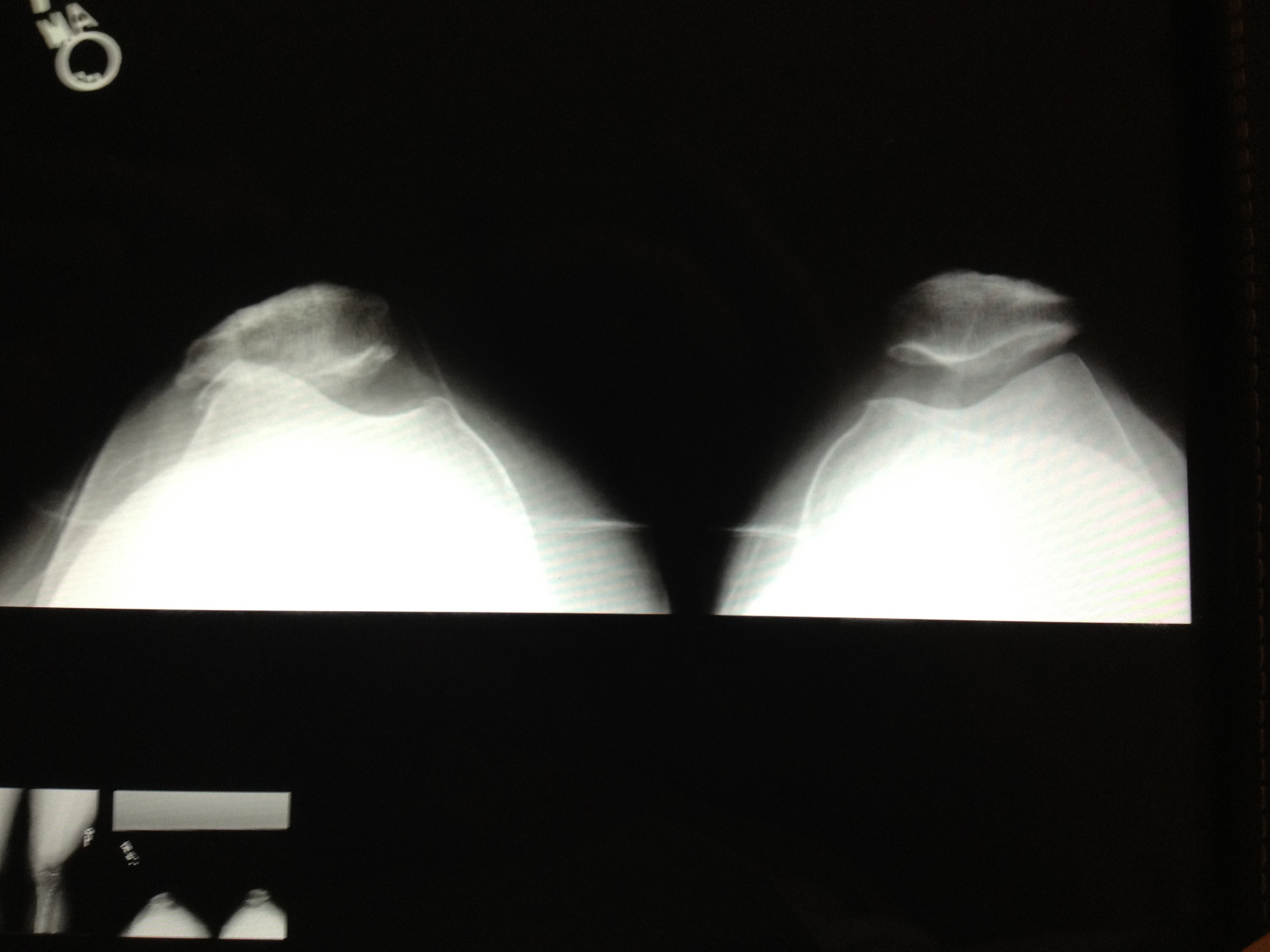BLOG: Anteromedial tibial tuberosity transfer
I first described this procedure, also called anteromedialization of the tibial tubercle, in 1983. Since then, the procedure has gained wide acceptance, particularly in the treatment of lateral patellofemoral arthritis related to chronic lateral tracking and focal overload.
In 1990, we demonstrated the profound ability of the anteromedialization (AMZ) type of tibial tubercle osteotomy (TTO) to unload the distal and lateral patella in early knee flexion, thereby alleviating pain and disability consistently in properly selected patients with distal and lateral patellofemoral arthritis. Medialization TTO, such as the Elmslie-Trillat procedure, does not lift the distal patella and actually adds load to the distal medial patella.
Steve Klinge and I reviewed patients who had the AMZ procedure more than 15 years previously and published in 2019, the long-term success of AMZ in patellofemoral joint preservation (see Figure), effectively avoiding the need for arthroplasty in these patients for more than 15 years. Today, AMZ is common in patellofemoral cartilage surgery.
AMZ also plays an important role in the treatment of patellofemoral instability in selected patients. In my experience to date, medial quadriceps tendon femoral ligament reconstruction or medial patellofemoral ligament reconstruction provides satisfactory stabilization in most patella instability patients, but those patients with documented lateral tracking, particularly when the TT-TG ratio is more than 15 mm, benefit from AMZ when there is a distal medial patella articular lesion (common), sometimes with added distalization for patella alta as a way of both normalizing the tracking vector and reducing risk of load onto a medial patella articular lesion related to the recurrent instability. Newer measurements, such as the AP distance between tibial tuberosity and trochlear groove, also may help in this determination.
Recently, several good technique articles have been published about AMZ in Arthroscopy Techniques and these are readily accessible to those wishing to learn more about the AMZ surgical technique. Essentially, it is still done as I first described the procedure in 1983 — 37 years ago. I still do the procedure frequently, on an outpatient basis.

Tjoumakaris and Bradley emphasized the utility of AMZ in athletes. Sherman, Farr, Shubin Stein, Beach and others have established the importance of AMZ in patellofemoral cartilage surgery. Done properly, AMZ has been consistently successful, with minimal risk, and gives long-term benefit with return to vigorous activity in most patients. Risks have been well described but are preventable with proper technique and early mobilization. Risk of fracture or serious complication is less than 1%. It is important to note also that tibial tubercle transfer surgery largely avoids need for trochleoplasty and/or rotational osteotomy of the femur.
I do AMZs two to five times a month and have never had a vascular injury (well over 1,000 cases now). It is an important procedure to master if you are orthopedic sports medicine specialist who sees patients with patellofemoral problems.- by John P. Fulkerson, MD
References:
Bastos Filho R, et al. Arthrosc Tech. 2017;doi:10.1016/j.eats.2017.08.037.
Beach, W. Tibial Tubercle Anteromedialization Osteotomy, pages 146-155, in Parikh’s Patellar Instability, Wolters Kluwer, Philadelphia, 2020.
Ferrari M, et al. Arthrosc Tech. 2017;doi:10.1016/j.eats.2017.05.012
Fulkerson JP. Clin Orthop Relat Res.1983.177:176-181.
Fulkerson JP, et al. Am J Sports Med. 1990;18(5):490-496; discussion 496-497.
Klinge SA, et al. Arthroscopy. 2019;doi:10.1016/j.arthro.2019.02.030.
Middleton KK, et al. Sports Med Arthrosc Rev. 2019; doi:10.1097/JSA.0000000000000270.
PidorianoAJ, et al. Am J Sports Med. 1997. 25(4):533-537.
Ridley T, et al. Arthrosc Tech. 2017; doi:10.1016/j.eats.2017.04.013.
Saper G, et al D. Arthrosc Tech. 2017 doi:10.1016/j.eats.2017.03.028.
Sanchis-AlfonsoV, et al. Am J Orthop (Belle Mead NJ).2017.;46(3):139-145.
ShermanSL, et al. Arthroscopy. 2019; doi: 10.1016/j.arthro.2019.05.013.
Tanaka M, et al. Orthop J Sports Med, 2017;doi:10.1177/2325967117S00383.
TjoumakarisFP, et al. Am J Sports Med. 2010; doi:10.1177/0363546509357682.
